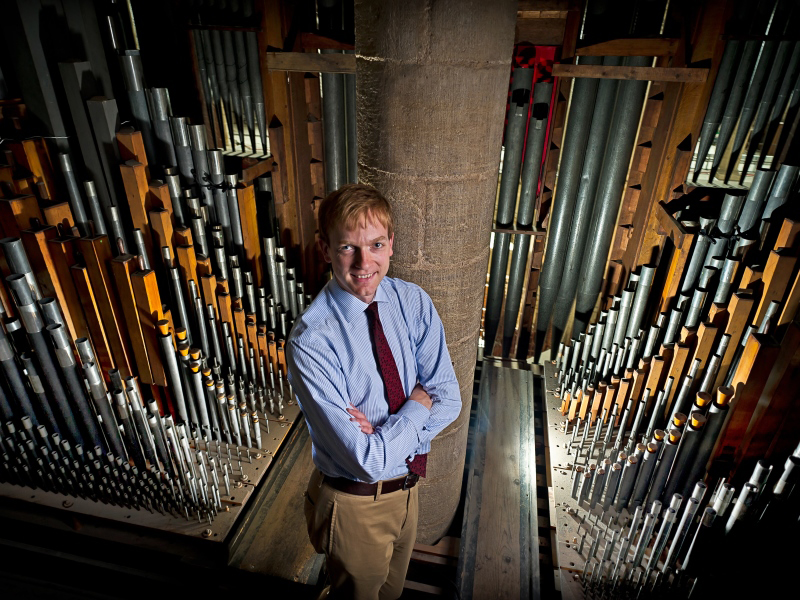Robert Quinney, former Director of Music, explains why the organ needs to be re-pitched
 Published 2014.
Published 2014.
We take it for granted that, give or take a few marginal differences, music all around the world is ‘at’ the same pitch: where the note A above middle C vibrates 440 times a second (440 Hz).
However, until 1939 different pitch standards - i.e notes called the same thing but vibrating at different rates - existed around the world. This began to cause a problem in the late nineteenth century, as long-distance travel became more common. Most instruments were simply replaced by new ones at standard pitch but organs, so much larger and more complex than a trumpet or clarinet, are quite a different proposition.
Peterborough’s organ is tuned at ‘Old Philharmonic’ pitch which is well on the way to half a semitone sharper than standard. The organ has 5,286 pipes - essentially 5,286 individual instruments all operated by one player. It is a huge job to alter the pitch of every pipe. The Cathedral has set about the enormous task to achieve the pitch change that will bring it in tune with the rest of the world.
Currently, we cannot use the organ with orchestras or brass bands, because they all play slightly lower - just under half a semitone lower. Worse still, for the Cathedral’s day-to-day services we are asking the choir to adapt their singing to a pitch very different to that of all the music they hear and perform outside the Cathedral. That is both very difficult, causing the choir serious tuning problems and potentially damaging to young, developing voices.
We therefore regard it as a high priority and a key project within our Peterborough 900 Campaign to have every one of the organ’s 5,286 pipes slightly lengthened in order to lower the pitch to international standard. This is a huge and delicate undertaking, which will cost over £400,000, but once done it will transform both the quality and flexibility of the Cathedral’s music.
Thanks
The Dean and Chapter would like to thank the numerous private charitable trusts, commercial organisations, organists’ associations and individual donors who have so generously contributed the funds to allow this work to begin.